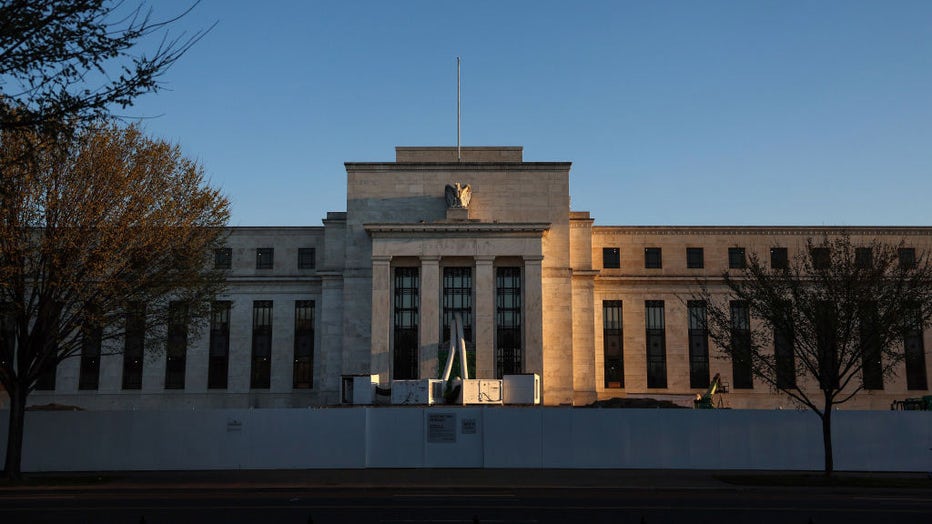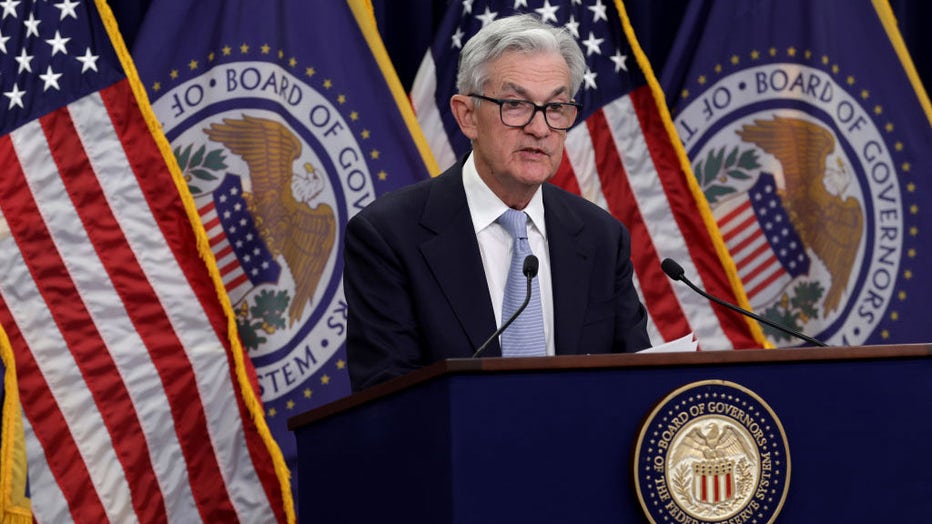Federal Reserve raises key interest rate by quarter-point

Federal Reserve increases interest rates to .25%. Powell says inflation needs to be controlled
The Federal Reserve on Wednesday enacted a quarter percentage point interest rate increase, expressing caution about the recent banking crisis and indicating that hikes are nearing an end.
WASHINGTON - The Federal Reserve extended its year-long fight against high inflation Wednesday by raising its key interest rate a quarter-point despite concerns that higher borrowing rates could worsen the turmoil that has gripped the banking system.
"The U.S. banking system is sound and resilient," the Fed said in a written statement released after its two-day meeting.
At the same time, the Fed warned that the financial upheaval stemming from the collapse of two major banks is "likely to result in tighter credit conditions" and "weigh on economic activity, hiring and inflation."

The Federal Reserve Headquarters are pictured on March 21, 2023 in Washington, D.C. (Photo by Kevin Dietsch/Getty Images)
The central bank also signaled that it's likely nearing the end of its aggressive streak of rate hikes. In a statement, it removed language that had previously indicated it would keep raising rates at upcoming meetings. The statement now says "some additional policy firming may be appropriate" — a weaker commitment to future hikes.
And in a series of quarterly projections, the policymakers forecast that they expect to raise their key rate just one more time – from its new level Wednesday of about 4.9% to 5.1%, the same peak level they had projected in December.
RELATED: Egg prices so high, Dollar Tree pulls them from shelves completely
Still, in its latest statement, the Fed included some language that indicated that its inflation fight remains far from complete. It said hiring is "running at a robust pace" and noted that "inflation remains elevated." It removed a phrase, "inflation has eased somewhat," that it had included in its previous statement in February.
Speaking at a news conference, Chair Jerome Powell said, "The process of getting inflation back down to 2% has a long way to go and is likely to be bumpy."

What causes inflation?
There are three factors that could lead to inflation which include demand-pull inflation, cost-push inflation and built-in inflation.
The latest rate hike suggests that Powell is confident that the Fed can manage a dual challenge: Cool still-high inflation through higher loan rates while defusing turmoil in the banking sector through emergency lending programs and the Biden administration’s decision to cover uninsured deposits at the two failed banks.
The Fed's signal that the end of its rate-hiking campaign is in sight may also soothe financial markets as they digest the consequences of the U.S. banking turmoil and the takeover last weekend of Credit Suisse by its larger rival UBS.
The central bank’s benchmark short-term rate has now reached its highest level in 16 years. The new level will likely lead to higher costs for many loans, from mortgages and auto purchases to credit cards and corporate borrowing. The succession of Fed rate hikes have also heightened the risk of a recession.
The Fed’s new policy decision reflects an abrupt shift. Early this month, Powell had told a Senate panel that the Fed was considering raising its rate by a substantial half-point. At the time, hiring and consumer spending had strengthened more than expected, and inflation data had been revised higher.
The troubles that suddenly erupted in the banking sector two weeks ago likely led to the Fed’s decision to raise its benchmark rate by a quarter-point rather than a half-point. Some economists have cautioned that even a modest quarter-point rise in the Fed’s key rate, on top of its previous hikes, could imperil weaker banks whose nervous customers may decide to withdraw significant deposits.
Silicon Valley Bank and Signature Bank were both brought down, indirectly, by higher rates, which pummeled the value of the Treasurys and other bonds they owned. As anxious depositors withdrew their money en masse, the banks had to sell the bonds at a loss to pay the depositors. They couldn't raise enough cash to do so.
After the fall of the two banks, Credit Suisse was taken over by UBS. Another struggling bank, First Republic, has received large deposits from its rivals in a show of support, though its share price plunged Monday before stabilizing.
The Fed is deciding, in effect, to treat inflation and financial turmoil as two separate problems, to be managed simultaneously by separate tools: Higher rates to address inflation and greater Fed lending to banks to calm financial turmoil.

Federal Reserve Board Chairman Jerome Powell holds a news conference following a Federal Open Market Committee meeting at the Federal Reserve on March 22, 2023, in Washington, D.C. (Photo by Alex Wong/Getty Images)
The Fed, the Federal Deposit Insurance Corp. and Treasury Department agreed to insure all the deposits at Silicon Valley and Signature, including accounts that exceed the $250,000 limit. The Fed also created a new lending program to ensure that banks can access cash to repay depositors, if needed.
But economists warn that many mid-size and small banks, to conserve capital, will likely become more cautious in their lending. A tightening of bank credit could, in turn, reduce business spending on new software, equipment and buildings. It could make it harder for consumers to obtain auto or other loans.
Some economists worry that such a slowdown in lending could be enough to tip the economy into recession. Wall Street traders are betting that a weaker economy will force the Fed to start cutting rates this summer.
The Fed would likely welcome slower growth, which would help cool inflation. But few economists are sure what the effects would be of a pullback in bank lending.
Other major central banks are also seeking to tame high inflation without worsening the financial instability caused by the two U.S. bank collapses and the hasty sale of Credit Suisse to UBS. Even with the anxieties surrounding the global banking system, for instance, the Bank of England faces pressure to approve an 11th straight rate hike Thursday with annual inflation having reached 10.4%.
And the European Central Bank, saying Europe’s banking sector was resilient, last week raised its benchmark rate by a half point to combat inflation of 8.5%. At the same time, the ECB president, Christine Lagarde, has shifted to an open-ended stance regarding further rate increases
In the United States, most recent data still points to a solid economy and strong hiring. Employers added a robust 311,000 jobs in February, the government report. And while the unemployment rate rose, from 3.4% to a still-low 3.6%, that mostly reflected an influx of new job-seekers who were not immediately hired.
RELATED: 2 failed banks, February inflation remaining high put Fed in tough spot

